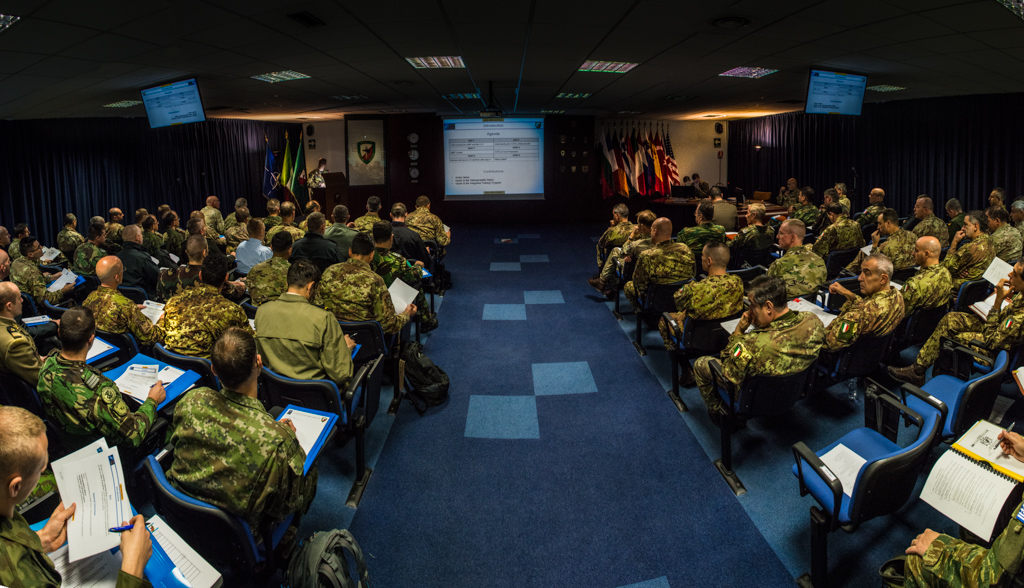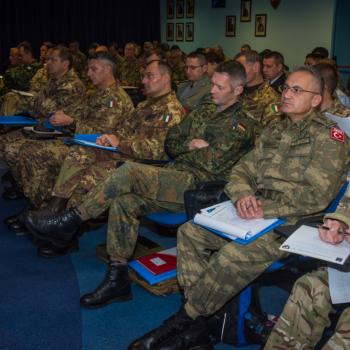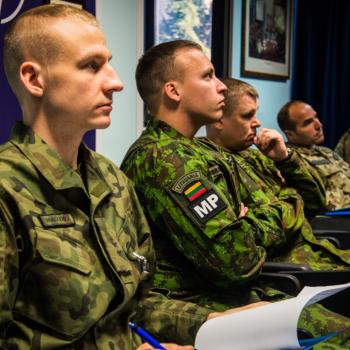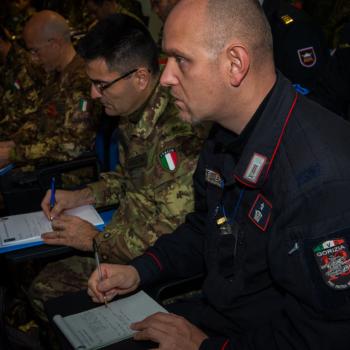
Solbiate Olona (VA), 8th-9th November 2016. The NATO Rapid Deployable Corps Italy hosted a Land Component Command Commanders Conference. The event has been organized with the aim of setting up the base for a common understanding of the preparation and readiness requirements to be met for the upcoming certification as LCC as NRDC-ITA takes this challenging responsibility for a stand-by period starting from 1 January 2018.
Commanders from all VJTF (L) units (as per NATO Reaction Force (NRF) rotation plan 2018), plus the IFFG (Initial Follow On Forces Group) stand-up and stand-down Brigades Commanders, have been requested to attend and contribute to the preparatory work necessary to a smooth integration and interoperability of all forces.
The development of an integrated training programme, the identification of interoperability solutions and the implementation of liaisons network have been in this two-day event agenda.
Making closing remarks, NRDC-ITA DCOM, Major General Sir Edward Alexander Smyth-Osbourne, reminded to the Commanders called to attend the conference as “standardization and simplicity are key to oiling the wheels. They will reduce complexity, uncertainty and risks.”
The NRF is a force capable of immediate collective defence response, of conducting crisis management and peace support operations as well as disaster relief and protection of critical infrastructures.
In the 2014 Wales Summit, NATO Allies agreed to enhance the capabilities of the NATO Response Force (NRF) in order to adapt and respond to emerging security challenges.
Having carefully considered the options presented during post-Wales discussions, the decision to incorporate a Very High Readiness Joint Task Force (VJTF) within the overall NRF structure was taken, increasing the size of the NRF to 40,000 and providing NATO with a highly capable and flexible air, land, maritime and special forces package capable of deploying at short notice when tasked.









